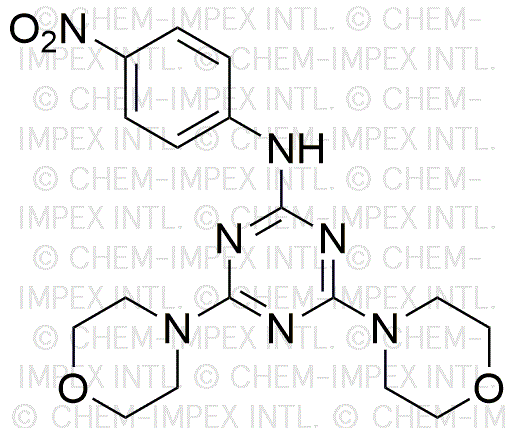MHY 1485 is widely utilized in research focused on:
- Agricultural Chemistry: This compound serves as a potential herbicide, helping to control unwanted plant growth while minimizing damage to crops, thus enhancing agricultural productivity.
- Pharmaceutical Development: It is explored for its potential as a drug candidate, particularly in targeting specific diseases, providing researchers with a new avenue for therapeutic interventions.
- Material Science: MHY 1485 can be used in the development of advanced materials, such as polymers, that require specific chemical properties for improved durability and performance.
- Environmental Science: The compound is studied for its role in bioremediation processes, aiding in the breakdown of pollutants in soil and water, which is crucial for environmental cleanup efforts.
- Biochemistry: It is utilized in various biochemical assays, offering researchers a tool for studying enzyme activities and interactions, which can lead to significant discoveries in biological research.
General Information
Properties
Safety and Regulations
Applications
MHY 1485 is widely utilized in research focused on:
- Agricultural Chemistry: This compound serves as a potential herbicide, helping to control unwanted plant growth while minimizing damage to crops, thus enhancing agricultural productivity.
- Pharmaceutical Development: It is explored for its potential as a drug candidate, particularly in targeting specific diseases, providing researchers with a new avenue for therapeutic interventions.
- Material Science: MHY 1485 can be used in the development of advanced materials, such as polymers, that require specific chemical properties for improved durability and performance.
- Environmental Science: The compound is studied for its role in bioremediation processes, aiding in the breakdown of pollutants in soil and water, which is crucial for environmental cleanup efforts.
- Biochemistry: It is utilized in various biochemical assays, offering researchers a tool for studying enzyme activities and interactions, which can lead to significant discoveries in biological research.
Documents
Safety Data Sheets (SDS)
The SDS provides comprehensive safety information on handling, storage, and disposal of the product.
Product Specification (PS)
The PS provides a comprehensive breakdown of the product’s properties, including chemical composition, physical state, purity, and storage requirements. It also details acceptable quality ranges and the product's intended applications.
Certificates of Analysis (COA)
Search for Certificates of Analysis (COA) by entering the products Lot Number. Lot and Batch Numbers can be found on a product’s label following the words ‘Lot’ or ‘Batch’.
*Catalog Number
*Lot Number
Certificates Of Origin (COO)
This COO confirms the country where the product was manufactured, and also details the materials and components used in it and whether it is derived from natural, synthetic, or other specific sources. This certificate may be required for customs, trade, and regulatory compliance.
*Catalog Number
*Lot Number
Safety Data Sheets (SDS)
The SDS provides comprehensive safety information on handling, storage, and disposal of the product.
DownloadProduct Specification (PS)
The PS provides a comprehensive breakdown of the product’s properties, including chemical composition, physical state, purity, and storage requirements. It also details acceptable quality ranges and the product's intended applications.
DownloadCertificates of Analysis (COA)
Search for Certificates of Analysis (COA) by entering the products Lot Number. Lot and Batch Numbers can be found on a product’s label following the words ‘Lot’ or ‘Batch’.
*Catalog Number
*Lot Number
Certificates Of Origin (COO)
This COO confirms the country where the product was manufactured, and also details the materials and components used in it and whether it is derived from natural, synthetic, or other specific sources. This certificate may be required for customs, trade, and regulatory compliance.


